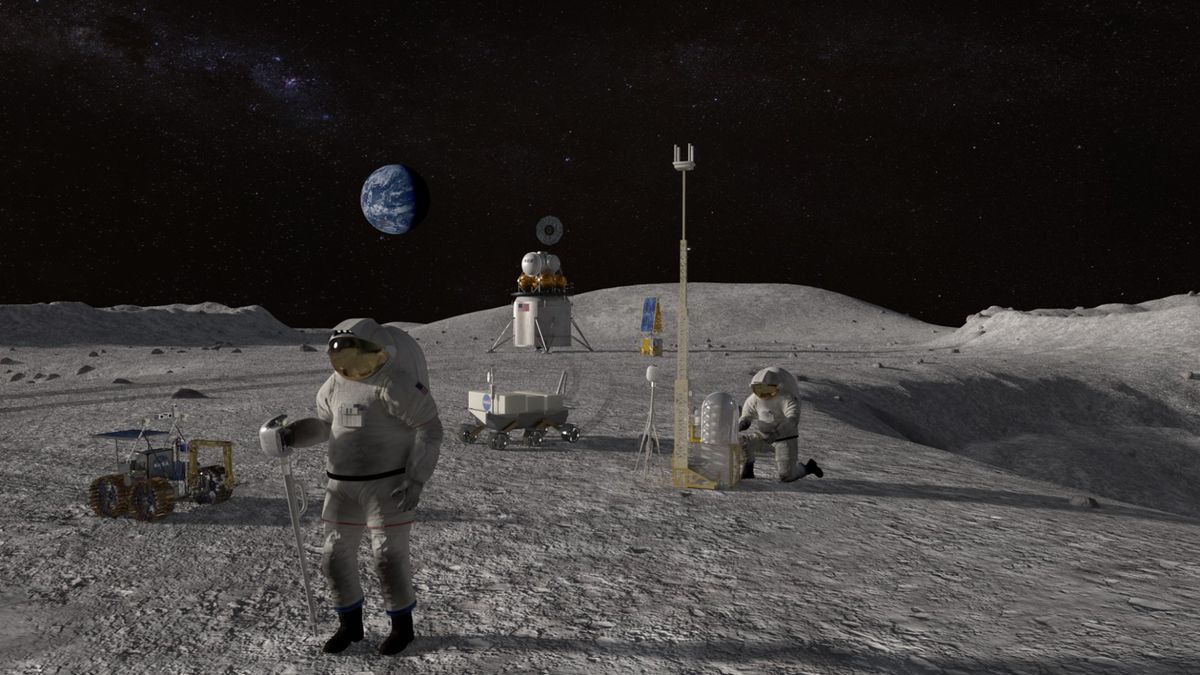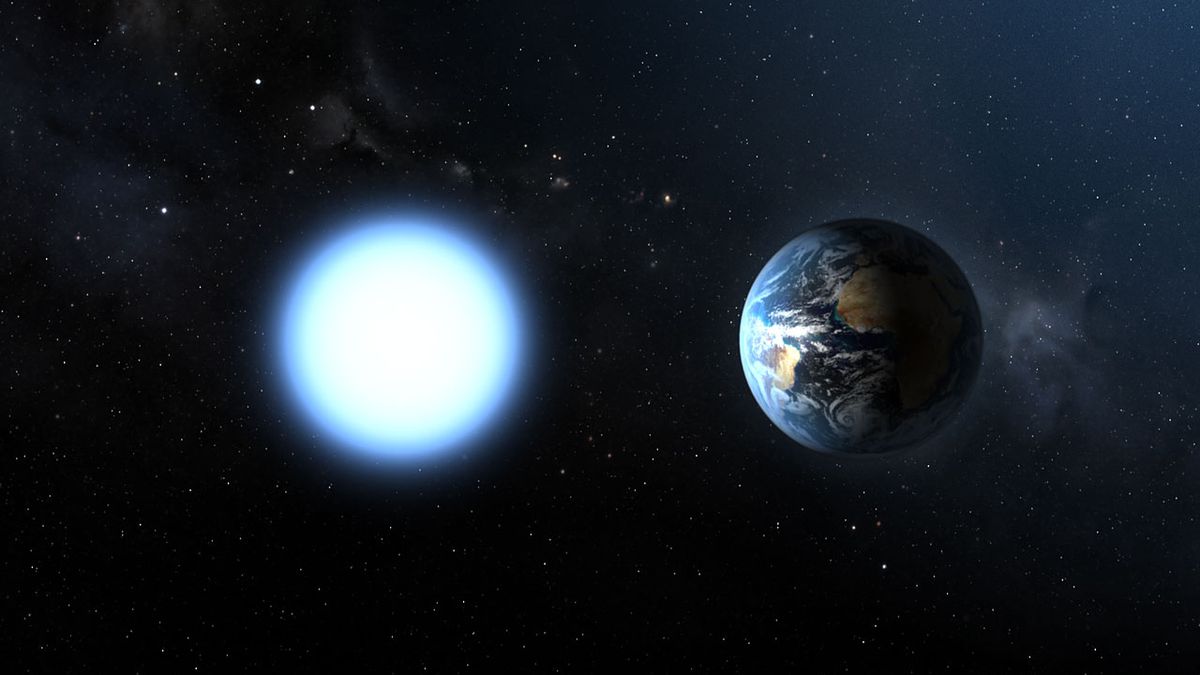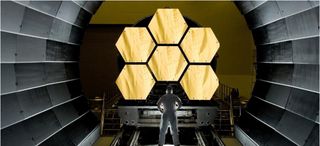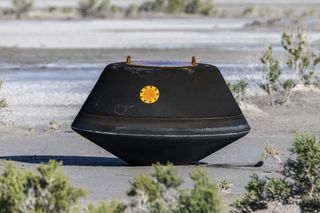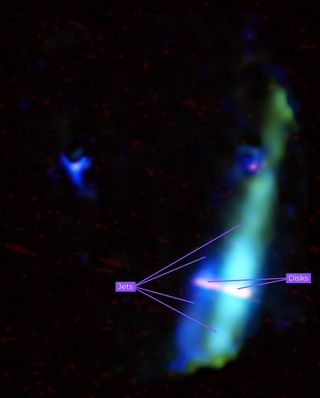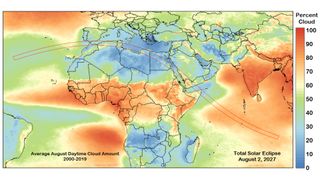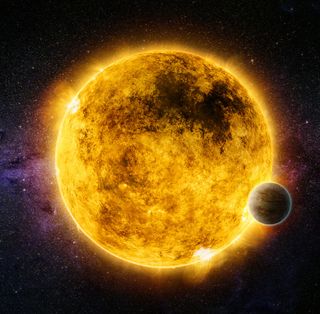Scientists have created the first-ever aerospace medicine biobank to help outline the impact spaceflight has on astronauts’ health. This repository integrates data and samples from various missions, including those performed by SpaceX and NASA, enabling researchers to compare and standardize space medicine findings and apply their results to future missions. “This represents a breakthrough in the study of human adaptation and life in space,” said Guy Trudel, one of the scientists behind the study and a professor in the Faculty of Medicine at the Ottawa Hospital Research Institute, in a…
Read MoreCategory: The Moon
Our moon
Life after stellar death? How life could arise on planets orbiting white dwarfs
Planets could survive the death of their star and become capable of supporting life — and now astronomers are going to go hunting for them. Stars do not survive forever, the sun included. In about five billion years, Earth’s star will begin to exhaust its supply of hydrogen used to generate energy via nuclear fusion in its core. The sun’s core will then begin to contract, increasing the temperature so that hydrogen in its outer envelope can then ignite fusion reactions that will cause the sun — and other stars…
Read MoreThe universe’s biggest explosions made some of the elements we are composed of. But there’s another mystery source out there
After its “birth” in the Big Bang, the universe consisted mainly of hydrogen and a few helium atoms. These are the lightest elements in the periodic table. More-or-less all elements heavier than helium were produced in the 13.8 billion years between the Big Bang and the present day. Stars have produced many of these heavier elements through the process of nuclear fusion. However, this only makes elements as heavy as iron. The creation of any heavier elements would consume energy instead of releasing it. In order to explain the presence…
Read MoreNASA’s asteroid sample mission gave scientists around the world the rare opportunity to study an artificial meteor
Earth is constantly bombarded by fragments of rock and ice, also known as meteoroids, from outer space. Most of the meteoroids are as tiny as grains of sand and small pebbles, and they completely burn up high in the atmosphere. You can see meteoroids larger than about a golf ball when they light up as meteors or shooting stars on a dark, clear night. While very small meteoroids are common, larger ones – bigger than a dishwasher – are not. Meteoroids are difficult objects for aerospace and geophysics researchers like…
Read MoreThis long-studied star is actually a stellar duo: ‘We were absolutely stunned’
Shrouded in a dense cloud of gas and dust, a young star in the constellation Ophiuchus that astronomers have studied for decades has been found to be a duo. It would also appear that both members of the pair are encircled by a disk of material within which planets may have just begun coalescing. The twin stars, which reside about 400 light-years from Earth in the WL 20 group, are less than a million years old and appear to have pushed away the billowy orange clouds within which they formed,…
Read MoreWho is Dr. Kovich in ‘Star Trek: Discovery’? The mystery explained
With his trademark suit-and-tie an anomaly among the primary-coloured uniforms of the 32nd century, Dr. Kovich always looked like a man out of time. Played by legendary director David Cronenberg — who, like “Star Trek: Discovery” itself, hails from Toronto — Starfleet’s biggest enigma has been an unknowable presence at Starfleet headquarters ever since the Disco crew landed in the distant future. Now, thanks to a major revelation in series finale “Life, Itself”, Kovich’s true identity is no longer a mystery — in fact, we now know where we’ve seen him before,…
Read More10 top tips for planning your 2027 solar eclipse trip
Are you preparing for the “eclipse of the century”? Once word gets out about the landmark total solar eclipse on Aug. 2, 2027, you can bet that thousands of eclipse chasers will plan a trip to the path of totality. Perhaps the biggest draw of this landmark solar eclipse is the length of totality, which will reach 6 minutes, 23 seconds. The potential viewing locations will attract many onlookers, with ancient Egyptian temples and Roman ruins within the path of totality. And who can overlook the excellent weather prospects? Whereas…
Read MoreWhere is the center of the universe?
The universe is undeniably vast, and from our perspective, it may seem like Earth is in the middle of everything. But is there a center of the cosmos, and if so, where is it? If the Big Bang started the universe, then where did it all come from, and where is it going? To start tackling these questions, let’s go back about 100 years. In the 1920s, astronomer Edwin Hubble made two amazing back-to-back discoveries: Early in the decade, he found that “island universes,” now known as galaxies, sit very…
Read MoreCould nearby stars have habitable exoplanets? NASA’s Chandra X-ray Observatory hopes to find out
The search for life beyond Earth dutifully continues. Astronomers using NASA’s Chandra X-ray Observatory, as well as the European Space Agency‘s XMM-Newton, are contributing some new research to the hunt — and hoping to lay the groundwork for future projects. The researchers are using Chandra to study radiation emitted from nearby stars to establish whether or not an exoplanet orbiting those stars could be habitable. X-rays and ultraviolet light could, at high-enough levels, damage an exoplanet’s atmosphere, reducing the possibility of supporting life (as we know it, anyway). “Without characterizing X-rays…
Read MoreThis Week In Space podcast: Episode 115 —Our Friendly Mr. Sun
On Episode 115 of This Week In Space, Rod Pyle and Tariq Malik talk about the sun and solar activity cycles. We see the sun every day as it rises and sets… it’s one of the few constants in life. But it’s a very dynamic body, throwing minor temper tantrums regularly. As it happens, we’re at the peak of its 11-year cycle of activity and there’s a lot going on! Dr. Alex Young, the Associate Director for Science in the Heliophysics Science Division at NASA’s Goddard Space Flight Center, joins…
Read More